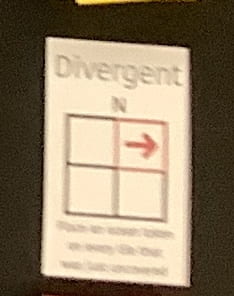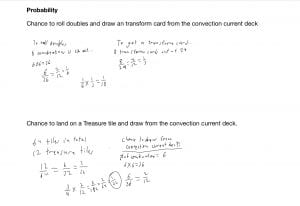Hello and welcome back to my blog. Right now winter break is right around the corner however, in the meantime, we just finished another project called Tectonic Chances.
The driving question for this project was “How are thematic and mathematical elements used in game design.” Now pretty much every game has thematic and mathematical elements. The thematic part, or theme is what makes the game interesting. You don’t want to play a game where you just move around white and black squares. That would be boring. Instead you want to be the commander of an army trying to take down the enemy King in a show of strategic moves. Those strategic moves are also the mathematical elements. Risk and strategies make games interesting. Playing safe and not doing anything might get you farther, but throwing everything on the line for a 50/50 bet is way more entertaining. In the end I think the best games are the ones that balance the two. Games that have enough story and theme that I can get engrossed in it, but with enough math and strategy that really makes the game interesting.
To learn more about this driving question, we were tasked to make our own game, about tectonic plates.

Questioning and Predicting
We started off making a brainstorm map of all the things we already knew, and a bunch of different ideas for our games

We then learned a bunch about tectonic plates by reading textbooks, filling in work sheets, and doing experiments. One of the more interesting experiments was on convection currents, and how different temperatures have different densities.
For this experiment we got some warm water coloured red, and cold water coloured blue. Because warm water is more dense then hot water, it floats to the bottom and forms separate layers. It was really interesting when you put your hand into the water, and could feel the different layers. This evidence was one of the main components in convection currents, which is the main way in which tectonic plates move. I thought this was a really interesting experiment that sustained my curiosity on scientific topics.
Convection Experiment Timelapse
Evaluating

After we learned all about tectonic plates and how they move, we started on our game. Our game had to have 10 different key science concepts in it. One of the main ways we included science concepts into our game was the convection currents deck. When you drew a card from this deck, it moves one of the movable plates on our board. Different cards move the plates in different ways. For example, “convergent” moves the plates into each other creating mountains. (This also shows subduction.) “Divergent” moves plates away from each other creating oceans (This also shows sea floor spreading.) “Transform” moves plates along side each other creating earthquakes.
Understanding and Solving

Along with the theme of tectonic plates, our games had to have some sort of mathematical component in it. In our case, it was probability. Our game had a lot of probability in it. To start, you had to roll 2 dice to figure out how much energy you would have that round. There were also 2 different decks each with its own probability, and the game board was also assembled randomly adding even more probability. This added a lot of interesting decisions that you made while playing the game. For example, You could fight another player, but there is always a chance that they get lucky and roll higher then you. When would you take that risk and when would you keep minding your own business.
In the end I think our game turned out quite well. I think it was a little bit too much luck and probability based but its really hard to make something skill based in the short amount of time that we had. I was really proud of our moving game board because it was a pretty unique concept that also brought a lot of science concepts to our game in a cool and interesting way.
Oh, I forgot to mention that this was another group project. If you would like to see my partner in crime, you can check out his perspective below.